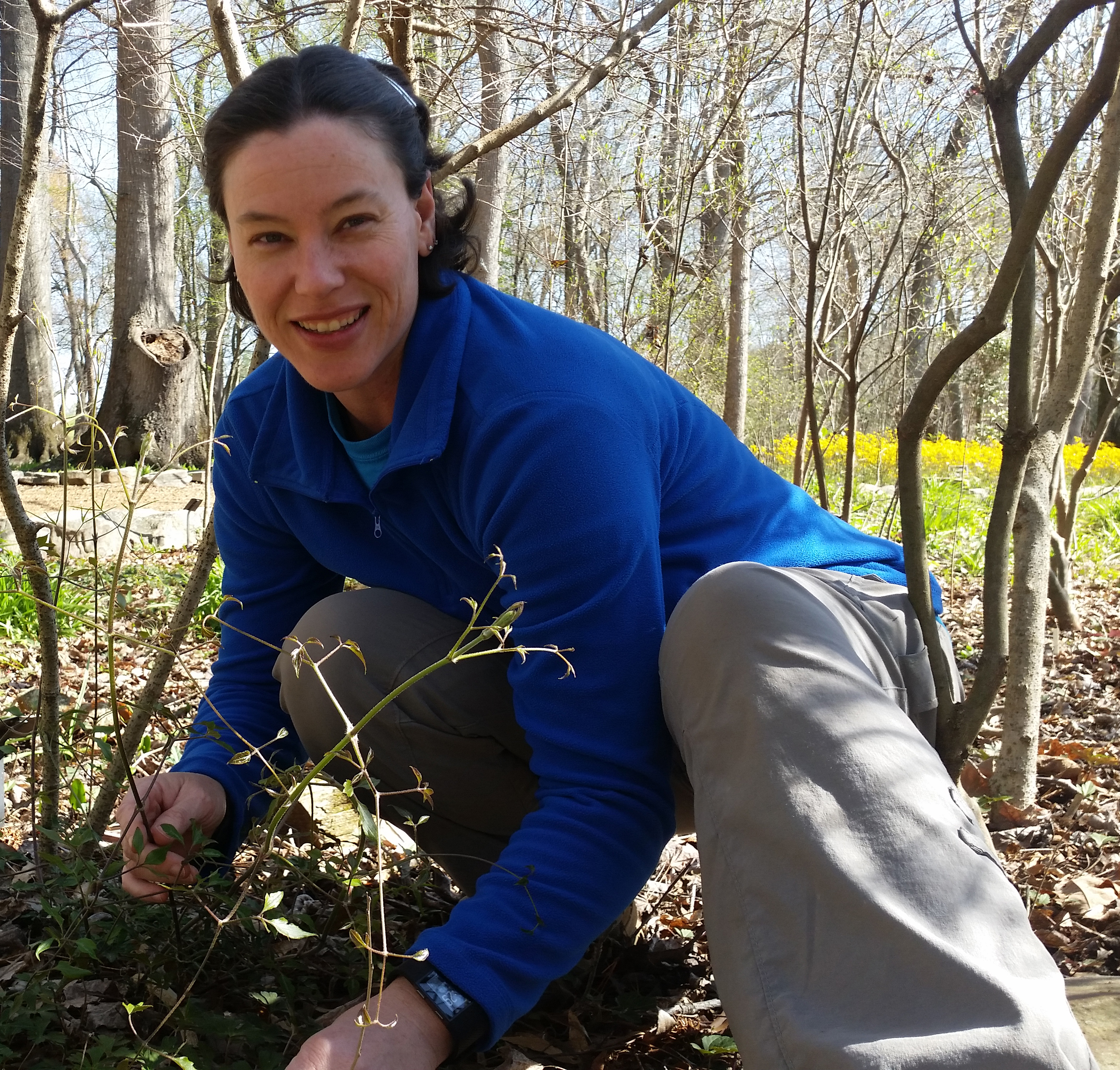With Thanksgiving right around the corner, it’s not surprising if thoughts turn to turkey with sage dressing, but did you know that some plants in the Salvia genus have pretty, cold-hardy foliage in addition to savory flavor?
Salvia officinalis is an evergreen subshrub with woody stems, grayish leaves, and blue to purplish flowers. It is a member of the mint family (Lamiaceae) and is native to the Mediterranean region, although it has naturalized in many places throughout the world. There are hundreds of plants the mint family but only a few are considered edible. Ornamental salvias like ‘Black and Blue’ or Red salvia, are not poisonous, but you wouldn’t want to cook with them. Ornamental salvias are usually called “salvia”, while edible salvias are usually referred to as “sage”. The following are some sages in our collection that are really showy right now.
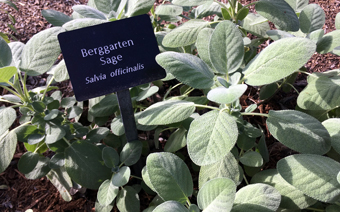 Salvia officinalis ‘Berggarten’ (Located in the Herb Garden)
Salvia officinalis ‘Berggarten’ (Located in the Herb Garden)
Salvia officinalis is the culinary sage familiar to most cooks. ‘Berggarten’ is a compact cultivar grows 1-2′ tall and is particularly tolerant of our humid, sub-tropical summers. Its gray-green leaves, up to 4 inches long, are wider than the species and strongly aromatic and are resistant to deer browse. It features whorls lavender-blue flowers, in short, upright spikes in late spring that are attractive to bees and butterflies. The genus name comes from the Latin word salveo in reference to the purported healing properties attributed to some plants in the genus.
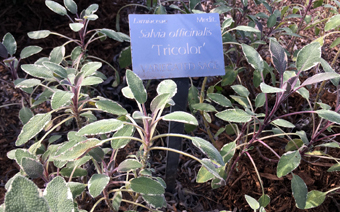 Salvia officinalis ‘Tricolor’ (Located in the Herb Garden)
Salvia officinalis ‘Tricolor’ (Located in the Herb Garden)
Salvia officinalis ‘Tricolor’ is grown primarily for its ornamental qualities (variegated three-tone foliage), but it also has culinary properties. It is a compact, shrubby perennial which typically grows 1-1.5′ tall and features wrinkled, oblong leaves which are marbled with grayish-green, white and purple and edged with pink. The leaves are strongly aromatic and may be used fresh or dried in cooking. ‘Tricolor’ is drought tolerant and attracts butterflies.
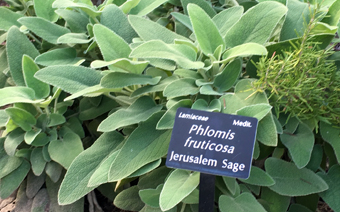
Phlomis fruticosa, Jerusalem Sage (Located in the Herb Garden)
Phlomis fruticosa, commonly called Jerusalem sage, is native from the Mediterranean region east across central Asia to China. It is a pubescent, mounding, shrubby perennial that grows to 2-4 feet tall. Plants perform best in USDA Zones 8-10 where they remain evergreen in winter. It is semi-evergreen here in USDA Zone 7. While it is a member of the mint family with sage-like appearance, it does not have a “sage” aroma or taste. Whorls of yellow flowers bloom in the summer, but additional flushes of bloom may occur throughout the remainder of the growing season if stems are promptly cut back after flowering. The name Phlomis derives from a Greek word for “flame” and may refer to use as lamp wicks.
Fall-blooming Camellias are also beginning to put on a show. One particularly pretty cultivar that is new to the Garden is ‘October Magic Crimson N’ Clover.’
 Camellia sasanqua ‘Green 08-052’ PPAF, October Magic® Crimson N’ Clover™ (Located in the Four Seasons Garden)
Camellia sasanqua ‘Green 08-052’ PPAF, October Magic® Crimson N’ Clover™ (Located in the Four Seasons Garden)
Crimson N’ Clover October Magic® Camellia features dark pink to red blooms for an extended period each fall. This fast-growing upright shrub boasts lush, dark green foliage with reddish new growth and grows 10-12 feet high by 6-8 feet wide, making it an excellent choice for screening. It also attracts birds and butterflies. Camellia sasanqua is native to Japan.
 Camellia x ‘Survivor’ (Located on the Dogwood Trail)
Camellia x ‘Survivor’ (Located on the Dogwood Trail)
‘Survivor’ is a cross between Camellia sasanqua and Camellia oleifera that was developed to push the hardiness range of Camellias northward. Here, ‘Survivor’ usually blooms October-November, with large single white fragrant flowers that start out tipped by soft pink on the ends of the petals. It is evergreen, upright in form, and matures to 6 x 5 feet.
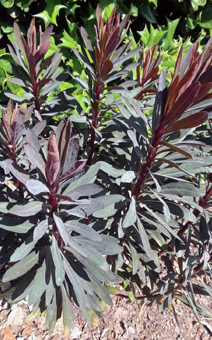 Euphorbia x martinii Blackbird™ ‘Nothowlee’ (Located in the Annual Garden)
Euphorbia x martinii Blackbird™ ‘Nothowlee’ (Located in the Annual Garden)
This drought-tolerant hybrid cushion spurge was developed in England for its unusual and attractive colorful foliage. It forms a bushy evergreen mound of red to dark purple deer- and rabbit-resistant foliage 18-24 inches tall and wide. Clusters of unique bright chartreuse-yellow flowers appear in the spring and are very showy against the leaves. The sap can cause skin and eye irritation and it is toxic if eaten. The genus name Euphorbia derives from Euphorbus, the Greek physician of king Juba II of Numidia, who married the daughter of Anthony and Cleopatra.

